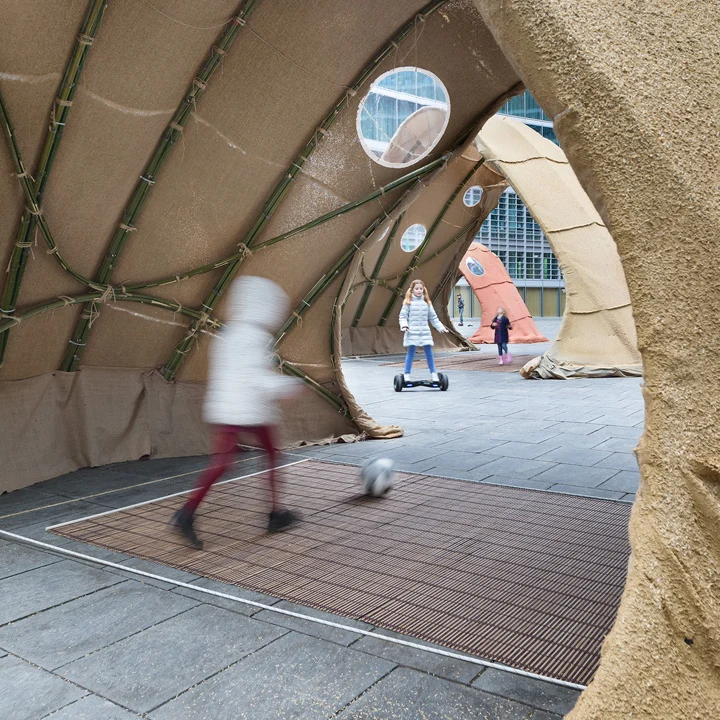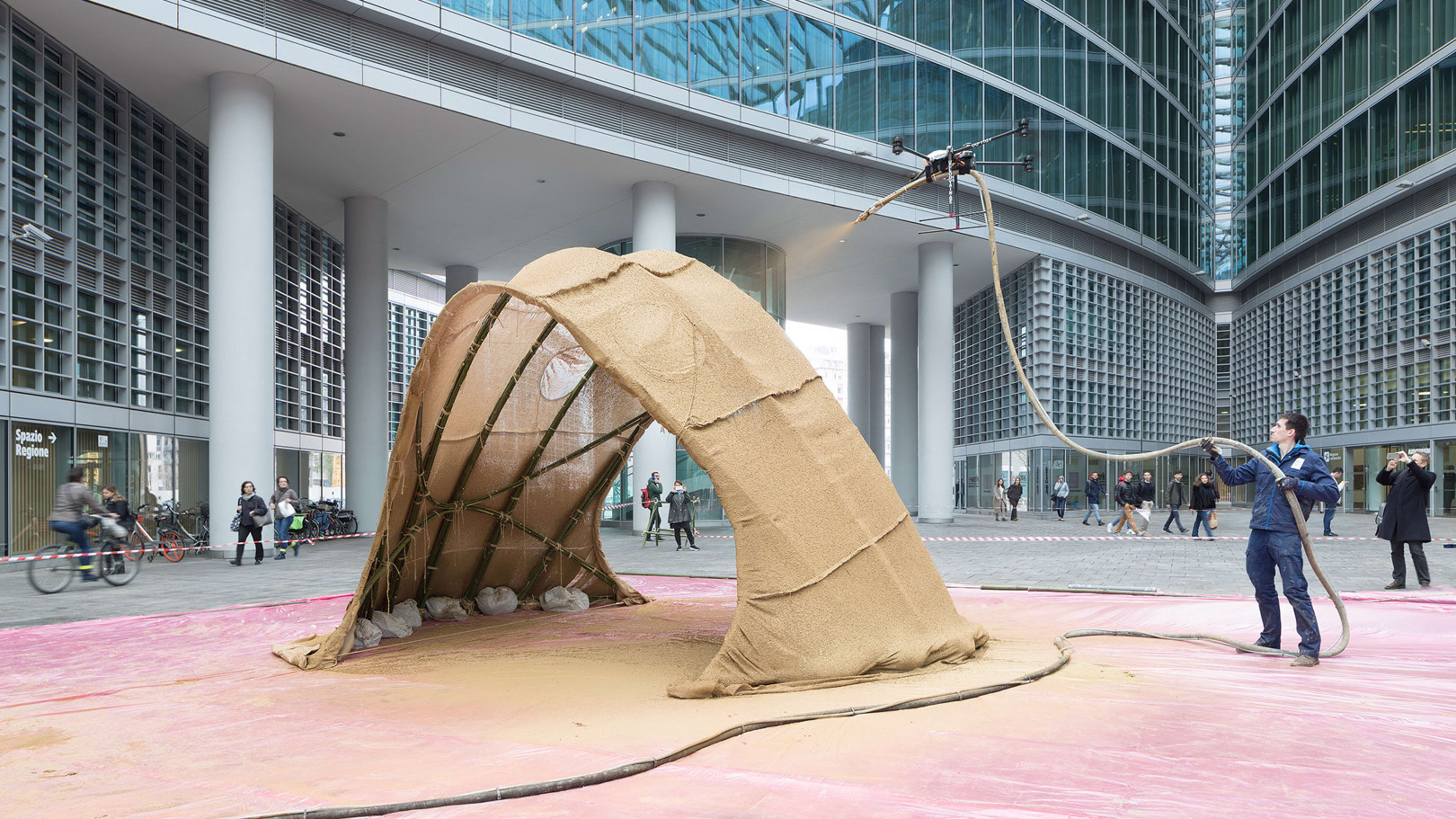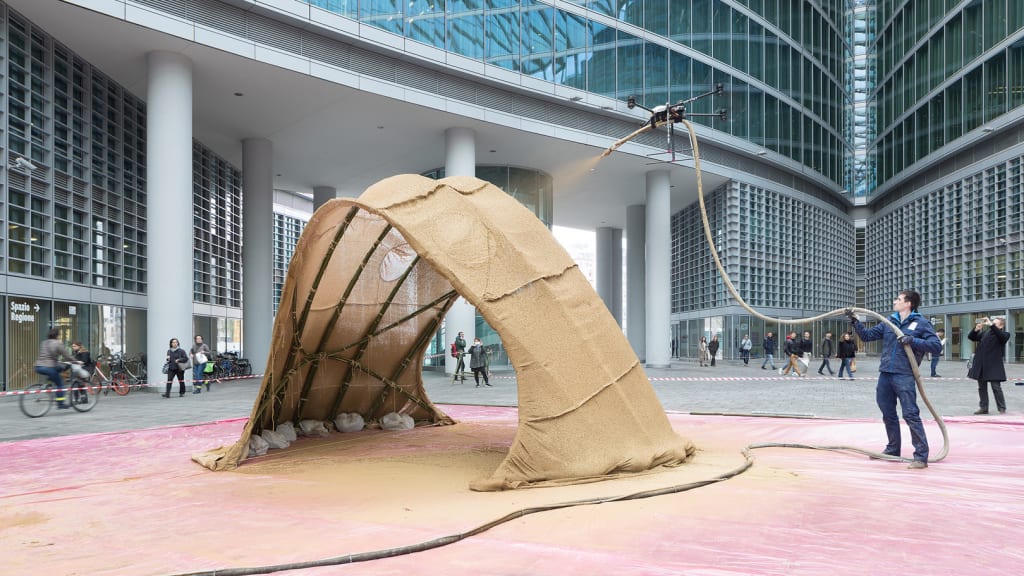Move over architecture, hello spray-chitecture?
The Spanish architecture firm MuDD has used drones that spray a cement-like substance onto fabric to construct lightweight structures. The method eliminates the need for expensive construction equipment and could be used, not only to create temporary shelters in humanitarian disaster areas, but also large structures in modern cities in the future, the designers say.

But the larger idea is to automate the more labor-intensive aspects of earth architecture, the process of building with natural materials. Earth architecture is generally gentler on the environment than conventional architecture. “Building with local materials such as bamboos, clay, sands, and rice husks offers a high sustainability factor,” MuDD’s principal Stephanie Chaltiel writes over email. But it can require extensive manual labor and, as a result, it’s time-consuming and expensive compared with other construction methods. Drone spraying speeds up the process: It took them five days to build the prototypes. It might’ve taken weeks otherwise.
The drone spray technique was developed with drone companies RCTake-off and Euromair plus researchers at the Catholic University of Louvain, France, with Chaltiel working in collaboration with Summum engineering, Canyaviva, and AKT II.
One of the benefits of using drones is that it allows the shotcrete to be used on tall buildings and freeform facades. Imagine a skyscraper shaped like one of these canopies, and you get the idea.

The drone technique still requires some manual labor: Someone has to fly it and hold the spraying hose but, in the future, Chaltiel wants to further automate the process: She envisions flying the drone remotely or even automating it completely.
Her ultimate dream is to build large, drone-based structures, using stabilized clay instead of cement. The former is durable and has excellent insulation properties, she says. “The hope is that such projects and techniques bring back sustainability linked with earth architecture in dense city centers,” she says.
Recognize your brand’s excellence by applying to this year’s Brands That Matter Awards before the early-rate deadline, May 3.






